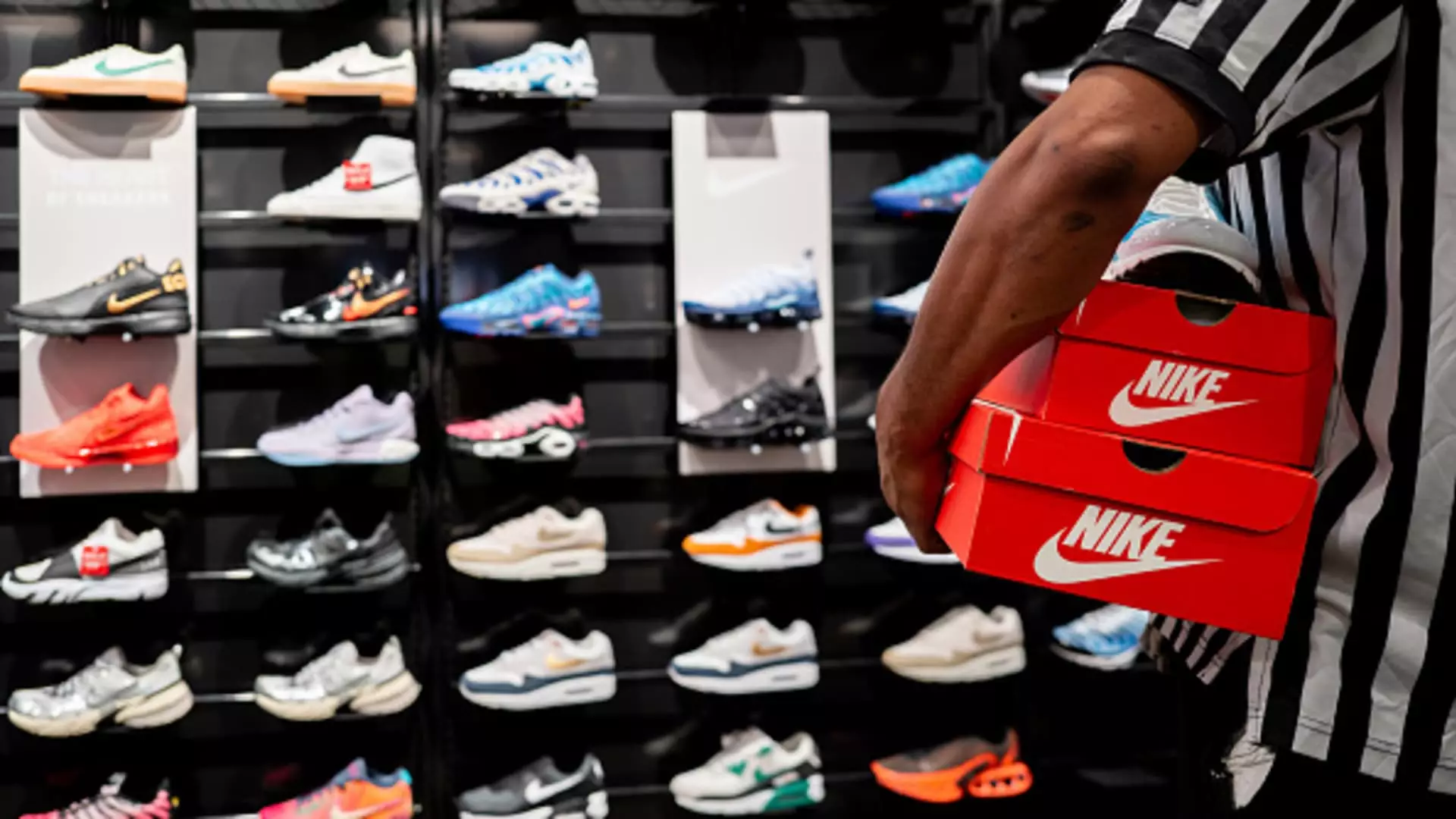Nike is set to release its quarterly earnings report on Tuesday, and the mood among investors is decidedly subdued. Expectations are low as analysts prepare for a bleak performance from the company. According to consensus estimates from LSEG, the world’s leading sneaker manufacturer is projected to report earnings of 52 cents per share, with revenues anticipated to reach $11.65 billion. Notably, this would represent a dramatic 10% decline in sales compared to the same period last year, alongside a staggering 45% drop in profits.
The underwhelming forecast highlights a pressing need for Nike to reevaluate its strategic direction, especially in light of recent developments in leadership. CEO John Donahoe’s impending departure has added to the uncertainty surrounding the company, marking a pivotal juncture as it attempts to pivot back to its roots of innovation and market competitiveness.
In a significant leadership change, Nike announced last month that Donahoe would step down, to be succeeded by Elliott Hill, a veteran with over three decades of service at the company. Hill’s appointment comes at a time when the brand is under scrutiny for its declining market position and innovation pipeline. While Donahoe presided over substantial annual sales growth of over 31%, the methods employed raised concerns. Critics argue that this growth was largely driven by successful legacy brands like the Air Force 1 and Air Jordan 1 rather than innovative new product lines.
This raises important questions about the effectiveness of the previous leadership style, which seemingly prioritized established franchises at the expense of forward-thinking design and market trends. Analysts will undoubtedly be looking for indications in the upcoming earnings call regarding Hill’s vision and his plans to reinvigorate Nike’s commitment to innovation and creativity.
The broader economic landscape presents another layer of difficulty for Nike. Consumer spending on discretionary items, particularly in the context of athletic footwear, has been sluggish. According to reports from Euromonitor, the expected growth in overall footwear sales for the year is a modest 2%, with athletic footwear projected to grow at a slightly healthier rate of 5.6%. Such slow growth is troubling for a company that has built its empire on being a trendsetter.
Adding to the complexity is the mixed economic environment in China—considered Nike’s third-largest market by revenue. The company’s outlook in this region has been cautious, signaling concerns about consumer sentiment and overall financial stability. However, in a potentially positive development, China’s central bank recently rolled out significant stimulus measures aimed at reviving its economy, which could bode well for Nike’s future sales in that key market. Investors and analysts alike will be keen to gauge the impact of these measures during the upcoming earnings report.
Another critical area that Hill will need to address is Nike’s relationship with its wholesalers. Over the past year, the company’s strategy of prioritizing direct-to-consumer sales while neglecting traditional wholesale partnerships has raised eyebrows. Brands like Foot Locker and DSW have felt the impact, and this breakdown in distribution relationships could dilute Nike’s market presence.
The incoming CEO will be tasked with striking a balance: bolster innovation while selectively engaging with wholesale partners who have been crucial to Nike’s historical growth. The upcoming earnings call will therefore serve as a vital touchpoint to see if Hill will prioritize reconnecting with these partners. Furthermore, any discussion on strategies to improve corporate morale following recent layoffs and cultural upheaval will be of significant interest.
As Nike approaches this critical earnings report, the stakes are high. Investors are anxious for signs of a turnaround in both market performance and corporate strategy. With an evolving competitive landscape and shifting consumer preferences, the need for Nike to redefine itself is more urgent than ever. The challenge facing Hill is substantial, but the company’s storied history suggests that it has the foundation to potentially rebound. Ultimately, this quarterly report will be crucial in determining whether Nike can adapt to change and reclaim its position at the forefront of the athletic footwear industry.


Leave a Reply